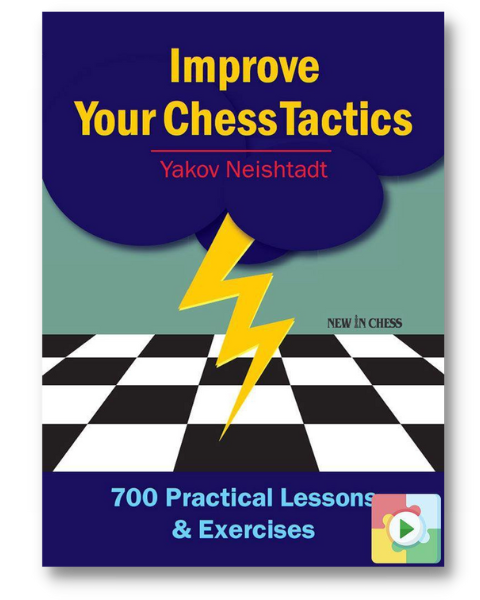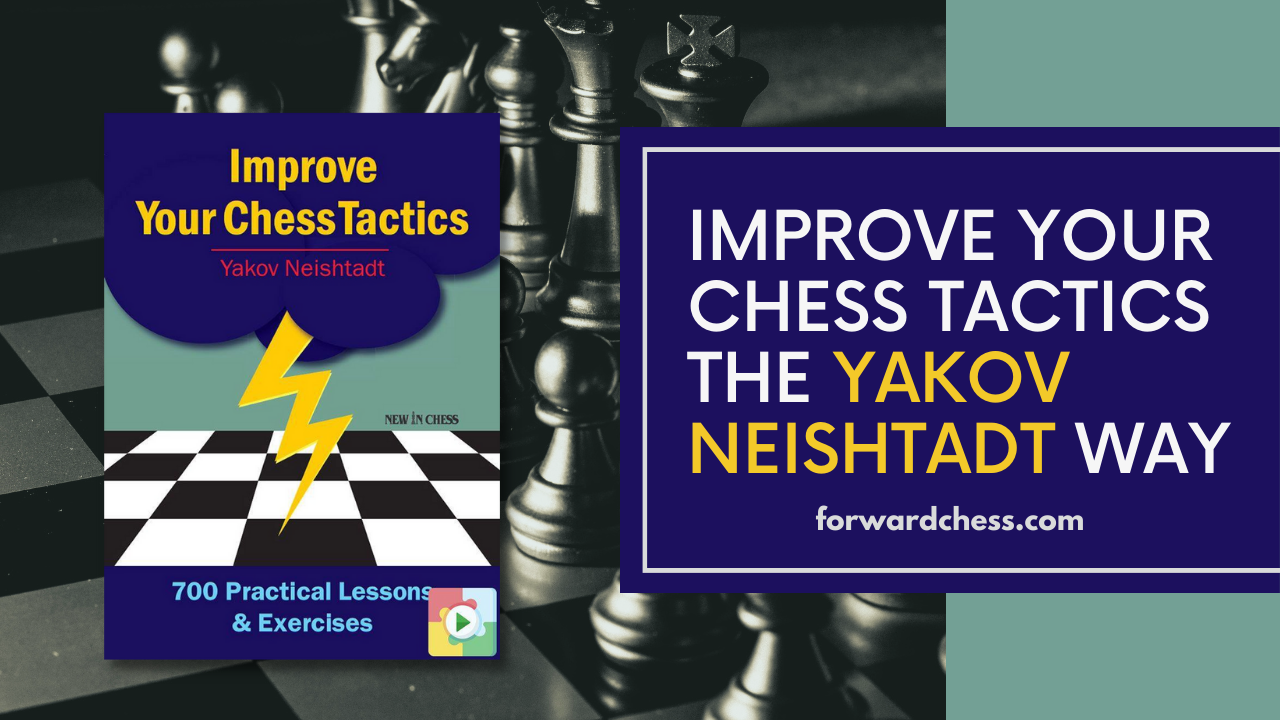Yakov Neishtadt is a name fondly remembered in the chess community, and on this day – what would have been his 100th birthday, we take a look at his life and one of his best works, Improve Your Chess Tactics.

Born in Moscow on 6 October 1923, Neishtadt was a Soviet and Israeli chess player and author. He worked as an editor for multiple chess publications, played strong competitive correspondence chess (including correspondence chess olympiads), and wrote many chess books on an array of topics.
One such book that I have personally grown quite fond of is Improve Your Chess Tactics – a book packed with hundreds of tactical positions sourced from actual games. These positions cover a wide array of themes, from the most basic pins and forks to more intricate combinations.

“Improve Your Chess Tactics” is structured in a way that eases the reader into increasingly complex tactical scenarios. The positions are grouped by themes and also by difficulty, making it suitable for players of all levels. Neishtadt starts each chapter with an examination of a theme, along with example positions, and then test exercises. The themed chapters are followed by a big chapter called “Combining Themes” which, as the name suggests, combines different themes into positions.
After all of this, you get to test your knowledge on examination positions, which are a smidge tougher as you don’t get any clue about the theme(s) in the positions. This makes sense of course, as during a game you won’t have someone whispering over your shoulder about what you should be looking for.
Themes range from pins to deflection to interference – but do not be fooled, although a theme titled “pinning” may seem rather elementary, some positions are not that at all (remember, the chapter positions become increasingly difficult). For example, the “Pinning and Unpinning” chapter starts off with a basic position:
It only requires basic tactical knowledge to see the solution: 1.Bd4 Kb6 2.b4 picking up the rook.
But let’s fast forward to a few more complicated positions:
The rook on h8 is out of play, and White realizes the advantage by means of a combinative blow: 1.Qa3+ Qe7 (1…Kg8 2.Bxh7+) 2.Bc6! Black resigned.
So as you can see, there is a wide range of difficulty and moreover, each position is followed by a solution, often accompanied by insightful explanations that don’t just show the right moves but also delve into the reasons behind them.
Try out a few of these Examination Exercises from the book:
Exercise 384
View Solution
Exercise 388
View Solution
Exercise 473
View Solution
Exercise 563
View Solution
Exercise 563
View Solution
Exercise 684
View Solution
On Forward Chess, this book is Tactics Trainer enabled, which makes it easier to really focus on the position without peeking at the solutions.
Have any thoughts or questions? Let us know in the comments!
Solution
Exercise 384
Exercise 388
Exercise 473
Exercise 563
Exercise 625
Exercise 684
- The Power of Pattern Recognition: The Woodpecker Method 2 - August 20, 2024
- Rock Solid Chess: Volume 2 - February 21, 2024
- Unsung Heroes of Chess - February 19, 2024
